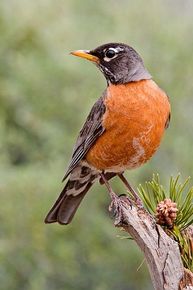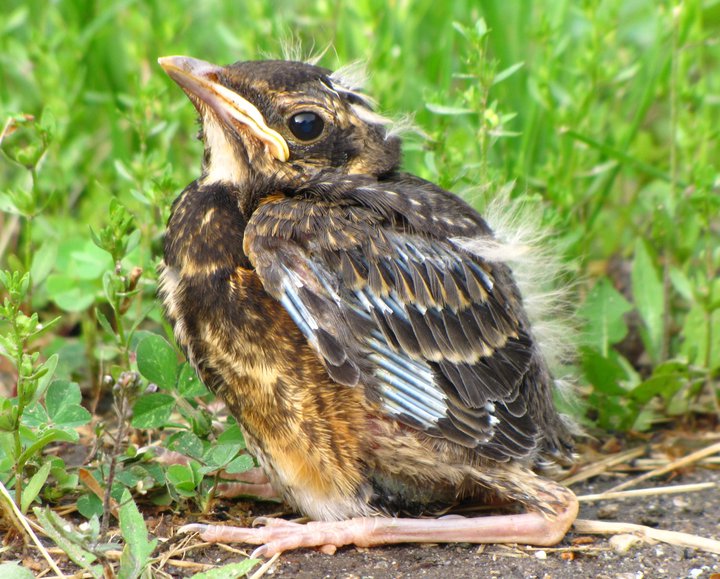american robinTurdus migratorius
Identification:
This medium-sized to large bird has the familiar “red breast” (actually more a rusty color), dark back and wings, pointy yellow beak with black tip, and beady dark eye with white crescents surrounding the eye. Underneath the tail there is a white patch that’s visible from beneath when the bird is flying. Sex differences in adults are subtle, but the young are distinctive in that they have a splotched breast that slowly turns to a solid color. Behavior: Robins forage on the ground in open spots; typically they run a few steps, stop, cock their heads, and then snap up their prey. They often flock together and have several different vocalizations, from a cheery song to a scolding alarm call. What brings it to the SBG? Food, cover, nesting sites. Robins eat lots of invertebrates (like worms), insects, beetles, and grubs; native plantings at the SBG should help increase insect populations. A little over half of the robin’s diet is fruits from many species including the chokeberry, hawthorn, and sumac present at the SBG. At SBG the open areas and shrub growth both furnish good foraging for the robin. Trees and dense shrubs provide good nesting sites. When can I see it? Year-round. Though some robin populations migrate short distances, they are seen in the Centre Region in winter. They’re less visible in winter because they roost in trees and stay away from the chilly ground. |


